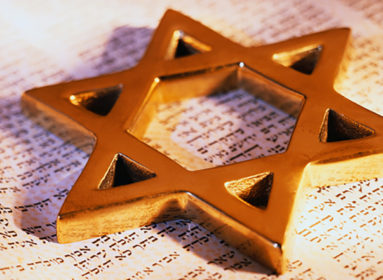By Cindy Mindell
FAIRFIELD — In a year’s time, the former site of the Warsaw Ghetto will be home to the state-of-the-art Museum of the History of Polish Jews. Leading the design of the new institution’s core exhibition is Dr. Barbara Kirshenblatt-Gimblett of New York University, who will give an insider’s view of the project on Monday, Oct. 22 at Fairfield University, hosted by the school’s Carl and Dorothy Bennett Center for Judaic Studies.
Kirshenblatt-Gimblett will also focus on the history of Jews in cities including Warsaw, Krakow, and Lodz, as part of Fairfield University’s two-year-long celebration, “Cities.”
The museum will be the first and only cultural institution to focus on the history of Polish Jews and the rich civilization they created over a millennium.
Kirshenblatt-Gimblett is a professor in the NYU department of performance studies. She has served or is currently serving as a consultant and curator for many museums, exhibition projects, and cultural festivals, including Beit Hatfutsot: The Museum of the Jewish People, in Tel Aviv; Jewish Museum Berlin; the United States Holocaust Memorial Museum and Smithsonian Institution, both in Washington, D.C.; Yeshiva University Museum, The Jewish Museum, and National September 11 Memorial Museum, all in New York; Skirball Museum and Museum of Jurassic Technology, both in Los Angeles; National Museum of American Jewish History in Philadelphia; Spertus Museum in Chicago; the YIVO Institute for Jewish Research; and the Los Angeles Festival, among others. She currently serves on the advisory board for the Jewish Museum Vienna.
A prolific author, she has written and co-written numerous books on Jewish topics, and has explored pre-Holocaust European Jewish life in several works, including “They Called Me Mayer July: Painted Memories of a Jewish Childhood in Poland Before the Holocaust” (University of California Press, 2007), an award-winning collaboration with her father, Mayer Kirshenblatt; and “Image Before My Eyes: A Photographic History of Jewish Life in Poland Before the Holocaust,” with Lucjan Dobroszycki (New York: Schocken, reissue 1995).
In 2006, after consulting for the Museum of the History of Polish Jews for several years, Kirshenblatt-Gimblett was invited to lead the Core Exhibition team, comprised of the museum’s curatorial staff and an international group of historical experts from Poland, Israel, and the U.S.
The concept for the museum developed in response to the success of, and from a sense of necessity after, the opening of the United States Holocaust Memorial Museum in 1993, Kirshenblatt-Gimblett told an audience at NYU in late 2007. In the talk, she credits Shaike Weinberg with inspiring the tone of the Polish museum’s core exhibition. Weinberg designed the U.S. Holocaust Memorial Museum’s permanent exhibition and was a pioneer of the multimedia, narrative museum, which he first implemented in establishing Beit Hatfutsot in Tel Aviv.
Planned in the ‘60s and opened in the ‘70s, the Israeli museum was considered quite radical for its time, Kirshenblatt-Gimblett says, as it contained no objects.. “Shaike started out as a theater director, and without objects, he felt that the museum would free itself to use every method and means necessary to tell its story,” she says. “When I asked him, ‘What’s the definition of a museum?’, he said, ‘It’s a story in a three-dimensional space,’ and that sounds a little like theater, and in many ways, I think of the Polish museum is a theater of history.”
The idea of the Polish museum was, if the Holocaust Museum as a museum of death in America, there was a need for a museum of life in Poland, Kirshenblatt-Gimblett says. “Somehow, the world should not know more about how Jews died than how they lived,” she says. “Shaike thought it would be extraordinary to create a museum of the history of Polish Jews in Poland, where the Nazis brought death to the Jews.”
Ground was broken on June 26, 2007, where the Warsaw Ghetto had once stood, a site reduced to rubble after the uprising of January 1943. Museum designers had no architectural fabric or history to work with, Kirshenblatt-Gimblett says, and many collections of objects and documents had been destroyed as well. “We need to engage visitors without requiring a lot of text or docents or tours or apparati – but rather an environment that a visitor can independently explore,” she says.
Described as “the heart and soul of the museum,” the exhibition will present 1,000 years of history of the largest Jewish community in the world, occupying eight galleries and nearly 45,000 square feet. Rather than view this history through locked display cabinets, visitors will participate in an interactive, multimedia narrative of Jewish history, culture, and religion based on source materials – drawings, photographs, films, and everyday objects.
The exhibition highlights the world of Polish Jews in eight galleries: Forest, First Encounters (Middle Ages), Paradisus Iudaeorum (15th-16th centuries), Into the Country (17th-18th centuries), Encounters with Modernity (19th century), The Street, Holocaust, and Post War Years.
Three messages drive the museum, Kirshenblatt-Gimblett says: The history of Poland is not complete without the history of Polish Jews; there is more to Jewish history in Poland than the Holocaust; and the story of Polish Jews doesn’t end with the Holocaust, but continues into the post-war period, the present and the future, in Poland and beyond.
“These messages run quite contrary to the way in which Poland has come to be viewed in history; the Holocaust has eclipsed a millennium of life,” she says. “Our task is to somehow address that.”
Dr. Barbara Kirshenblatt-Gimblett will speak on Monday, Oct. 22, 7:30 p.m., at Fairfield University’s Dolan School of Business Dining Room, 1073 North Benson Road in Fairfield. For information or reservations call (203) 254-4000, ext. 2066.
Comments? Email cindym@jewishledger.com.







 Southern New England Jewish Ledger
Southern New England Jewish Ledger
















